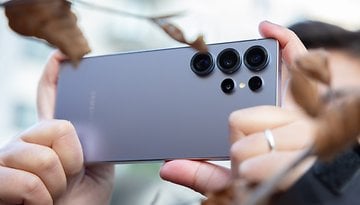#TBT - Not even SEGA and Nintendo could make VR cool in the '90s


Virtual reality has been 'the future' for a long time now. In fact, people have experimented with different forms of proto-VR since the early 20th century. But back in the heady days of the '90s home console wars, two giants decided that the time was right to bring VR into everybody's home. And well, you can guess how that went down. But despite the failure of timing and technology, it was a taste of things to come.
Remember those happy days spent VR gaming back in the '90s? No, I don't either. But that doesn't mean it we didn't dream about it. Many young geeks, and even most people, knew what virtual reality was even if we never saw it in real life, thanks to cyberpunk sci-fi novels and movies that immersed characters in virtual worlds like Tron. In fact, before the decade even started, virtual reality was officially becoming A Thing, and computer-generated VR was present, in a device whose name has a familiar ring to it...
Pre-90's VR gets its name and an...EyePhone?
At this time, people knew what virtual reality was, there still wasn't a general term to describe the field. In the 1970s, computer artist Myron Krueger coined the term "artificial reality," but it didn't really catch on. Instead, the term virtual reality is widely credited to computer scientist and artist Jaron Lanier in the 1980s. You may recognize Lanier as the dreadlocked talking head often trotted out nowadays to comment on the state of the Internet, and especially social media. He's not a fan.
But in 1987 Jaron Lanier was researching VR as the founder of the visual programming lab (VPL). This company developed a range of virtual reality gear such as the EyePhone head-mounted display, and the Dataglove, which could track each of your fingers in real time, something that VR users have clamored for in recent years. As you can see from the video below, this stuff really worked, haptics and all, even if the graphics are primitive compared to today.
VPL was the first company to sell virtual reality goggles but at eye-watering prices. The EyePhone 1 cost $9400 and higher end EyePhone HRX sold for $49,000, with the Datagloves going for $9000. The prices of the Magic Leap One, and HTC Vive Pro don't seem so insane compared to that. VPL filed for bankruptcy in 1990, but its work continued to inspire. You can even spot some VPL equipment in the 1992 sci-fi movie The Lawnmower Man, which has VR as a central theme.
VPL didn't make it into the '90s but the public was getting access to virtual reality via arcade games from The Virtuality Group. These machines had a VR HMD to put on plus some peripheral such as controller, a gun or even a full-on dodgem-style vehicle, to interact with the game with stereoscopic 3D visuals and real-time latency. Some machines were even networked together for a multi-player gaming experience.
But the '90s heralded the golden age of the home console, and of course, the biggest names in the business at the time, Nintendo and Sega, were confidently about to bring virtual reality into people's homes. Of the two rivals, Sega was arguably the first in both development, technical achievement, and failure.
1993 – the Sega VR, so close yet so far
Those of you who fondly remember the old Sega Genesis or Mega Drive may also recall that Sega released quite a few peripherals with which to upgrade the console. The Sega VR headset was announced at the Consumer Electronics Show in 1993 an add-on for the Sega Genesis console, and is surprisingly close in appearance to the headsets for Oculus and HTC that we know today.
The wrap-around VR headset was reminiscent of a Star Trek style visor and incorporated dual LCD screens and features like head tracking and stereo earphones, intended a price point of about $200 at the time (about $353 in today's money) - not too bad! You can see Sega's CES sales pitch for their VR kit in the video clip below.
Sega VR CES show by MTV presenter Alan Hunter:
"I thought I had to wait 'til I was old, like 30, to get VR at home". Oh boy. Sega VR certainly generated public interest, riding on that post-Lawnmower Man VR hype and appearing in plenty of magazines. Four launch titles were on the slate: Nuclear Rush (sci-fi hovercraft combat), Iron Hammer (military helicopter sim), Matrix Runner (cyberpunk adventure), and Outlaw Racing (Road Rash style racer-fighter).
The Sega VR was even demoed to retailers (who reportedly wanted to order thousands) and journalists (to mixed impressions). However, technical difficulties would condemn the Sega VR to development hell for eternity. Although Sega claimed that they had to hold back on the headset because it was "too realistic" for players to handle without hurting themselves. In fact, the problem was more likely due to a common VR bugbear that still puts off many of us today. Can you guess what it is?
That's right, if you've ever tried modern VR and felt the dreaded onset of motion sickness, just imagine how much worse it would have been on 1993 hardware. In extending testing before the targeted launch, researchers reported multiple instances of headaches and motion sickness - worst of all, children, the main target market, were particularly susceptible. Fearing a public backlash, Sega quietly killed their Genesis VR peripheral.
1995 - Nintendo Virtual Boy sees red
Nintendo has a knack for coming up with innovative hardware and sometimes odd-looking hardware, as we've seen with the Wii and Switch. Virtual Boy (originally known as VR-32) was certainly an odd beast - a 3D gaming console on a stand that you placed your head behind, like looking through tourist binoculars. Despite being a pioneer in terms of 3D graphics, it wasn't great to look at. In fact, it could only show images in black and red.
The Nintendo Virtual Boy was marketed with characteristic '90s aggression:
Monochrome vector graphics wasn't the only problem with the Virtual Boy. As you can imagine, the set up was difficult to use comfortably, it didn't allow head tracking, and reviewers at the time complained about dizziness, nausea and headaches. It did make it to market in Japan and North America at a price of $180 but it was a commercial flop even after successive price drops. Production and sale of the Virtual Boy was discounted within a year, and the device was consigned to be a recurring Easter Egg reference in many successful Nintendo titles on better consoles.
Mario Tennis isn't exactly what people dreaming about doing in VR:
Curiously, Sega had previously been approached to license the technology behind Virtual Boy, but it didn't impress the company who would go on to work on the doomed Sega VR. While Sega's effort was certainly more ambitious to the point of resembling the popular VR headsets we know today, at least Nintendo actually brought a retail product to market.
So when is the future?
I can't help but think again about that astonished Sega fan, so excited to play in VR before the ripe old age of 30. Will he pick up the Oculus Quest this year with the same amount of enthusiasm? Has Ready Player One excited the public about VR in a less creepy way than The Lawnmower Man? Looking at the state of commercially available VR, it's surprising both how far we've come but also how long it takes.

VR itself has some managed to be the cusp of the future for over 30 years. But the landscape is very different now. Virtual reality has advanced in fields of got back into VR this year in the company's quirky style.
Virtual reality is still an awkward fit into many people's lives but we're finally seeing a product range with different levels of price and accessibility that could see the technology spread to many more households come the holiday season. But we're a long way from seeing the living room VR kit become as popular as the voice-controlled smart speaker. The technologically inclined are looking into the future through these cyberpunk goggles, waiting it come closer and closer with excitement, but the general public still prefers to wait for it.
Even if the VR kits and marketing of the '90s may seem naive and cheesy now, I have to salute VPL, Sega, Nintendo and all their workers and partners for shooting for the stars, even if they crashed and burned. We wouldn't be where we are now without their creativity and spirit.




















I don't like VR. I find reality more intriguing to my curiosity.